🤠 Wild West Adventure: Exploring the Deserts of Arizona 🌵
Uncover the Mysteries and Beauty of Arizona's Desert Wilderness
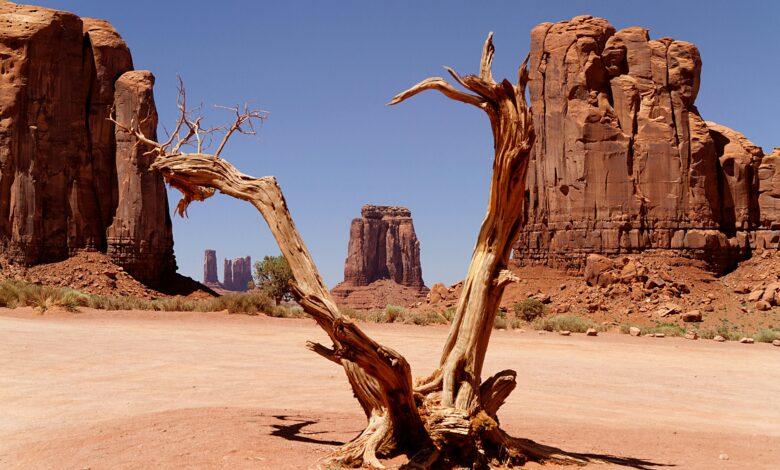
Introduction
Welcome to the untamed landscapes of the Wild West, where the deserts of Arizona beckon with their rugged beauty and boundless adventures. Join us as we embark on an exhilarating journey through this iconic region, where vast expanses of sandstone formations, towering cacti, and dramatic canyons await exploration. From the mystical allure of Monument Valley to the awe-inspiring grandeur of the Grand Canyon, Arizona’s deserts promise an unforgettable adventure that embodies the spirit of the Wild West.
The Sonoran Desert – A Tapestry of Life
The Sonoran Desert, spanning parts of Arizona, California, and Mexico, is a captivating ecosystem renowned for its remarkable biodiversity and unique features. Here, amidst the arid landscape, life thrives in unexpected ways, showcasing nature’s resilience and adaptation to harsh conditions.
Iconic Saguaro Cacti
The towering Saguaro cactus is perhaps the most emblematic symbol of the Sonoran Desert. With its distinctive silhouette reaching heights of up to 40 feet, the Saguaro stands as a testament to the resilience of life in this arid environment. These majestic giants provide vital resources and shelter to numerous desert creatures, including birds, bats, and small mammals.
Diverse Wildlife
Despite its seemingly inhospitable conditions, the Sonoran Desert teems with a rich variety of wildlife. From elusive desert bighorn sheep to agile coyotes and elusive bobcats, the desert is home to an array of fascinating creatures adapted to survive in this harsh environment. Birdwatchers flock to the region to catch glimpses of colorful species like the vibrant Vermilion Flycatcher or the iconic Greater Roadrunner darting among the cacti.
Outdoor Activities
For outdoor enthusiasts, the Sonoran Desert offers a plethora of opportunities to immerse oneself in nature’s splendor. Hiking trails wind through rugged canyons and pristine desert landscapes, offering breathtaking vistas and encounters with native flora and fauna along the way. Birdwatching excursions provide the chance to spot rare and endemic species, while nighttime wildlife tours unveil the desert’s nocturnal inhabitants, from scorpions glowing under blacklight to elusive nightjars calling in the darkness.
Conservation Efforts
As human development encroaches upon the desert landscape, conservation efforts are crucial to preserving the delicate balance of this unique ecosystem. Organizations and agencies work tirelessly to protect critical habitats, mitigate human-wildlife conflicts, and raise awareness about the importance of preserving the Sonoran Desert’s biodiversity for future generations.
Cultural Significance
Beyond its ecological significance, the Sonoran Desert holds profound cultural importance for indigenous communities whose ancestral ties to the land stretch back thousands of years. Their traditional knowledge and stewardship practices offer valuable insights into sustainable coexistence with the desert environment, emphasizing the interconnectedness of all living things in this fragile ecosystem.
Ecotourism and Sustainable Practices
In recent years, ecotourism has emerged as a promising avenue for promoting conservation and supporting local economies in the Sonoran Desert region. Responsible tourism initiatives prioritize sustainable practices that minimize environmental impact while providing immersive experiences that foster appreciation for the desert’s natural beauty and biodiversity.
Monument Valley – Where Nature’s Sculptures Reign
Monument Valley, with its iconic sandstone formations, stands as a testament to the raw beauty of nature’s sculptural prowess. Situated within the Navajo Nation, this awe-inspiring landscape has captivated visitors for generations with its towering buttes, mesas, and spires.
Navajo Tribal Park: Exploring Cultural Significance
The Navajo Tribal Park encompasses the heart of Monument Valley, preserving not only its geological wonders but also its rich cultural heritage. For the Navajo people, these sandstone monoliths hold profound spiritual significance, featuring prominently in their myths, legends, and traditional ceremonies.
Capturing the Beauty: Photography Opportunities
Photographers flock to Monument Valley to capture its breathtaking vistas and ever-changing light. From sunrise to sunset, the play of shadows and colors across the landscape creates a photographer’s paradise. The iconic formations, such as the Mittens and the Totem Pole, offer endless compositions, while the vast desert backdrop provides a stunning contrast.
Guided Tours: Immersive Experiences
Guided tours provide visitors with a deeper understanding of Monument Valley’s geological and cultural wonders. Navajo guides lead travelers through the valley, sharing stories passed down through generations and offering insights into the land’s significance. Whether by jeep, horseback, or hiking, these guided excursions offer an immersive way to experience the magic of Monument Valley.
Overview of the Grand Canyon’s Geological History
The Grand Canyon, carved by the mighty Colorado River over millions of years, offers a glimpse into Earth’s geological past. This immense chasm exposes nearly two billion years of the planet’s history, showcasing a stunning array of rock layers and formations. The story of the Grand Canyon begins with the deposition of sedimentary layers, which were later uplifted and carved by the relentless force of water.
The oldest rocks in the Grand Canyon date back to the Precambrian period, over a billion years ago. These ancient rocks provide clues about the early history of North America and the processes that shaped the continent. As time progressed, layers of sediment accumulated, creating a record of changing environments and climates.
The Colorado River, flowing through the canyon, played a crucial role in sculpting the landscape we see today. Over millions of years, the river carved its way through the rock, creating sheer cliffs, towering mesas, and winding side canyons. Erosion continues to shape the canyon, as the river gradually deepens its path through the rock layers.
Visitors to the Grand Canyon can explore this geological wonder through various viewpoints and hiking trails, each offering a unique perspective on the canyon’s formation and evolution. From the South Rim to the North Rim, there are numerous opportunities to witness the beauty and grandeur of this natural masterpiece.
Description of Popular Viewpoints and Hiking Trails
Visiting the Grand Canyon presents a multitude of options for experiencing its breathtaking vistas and rugged terrain. The South Rim, easily accessible and offering panoramic views, is the most visited area of the canyon. Here, visitors can enjoy iconic viewpoints such as Mather Point, Yavapai Observation Station, and Hopi Point, each providing stunning vistas of the canyon and the Colorado River below.
For those seeking a more immersive experience, hiking trails like the Bright Angel Trail and the South Kaibab Trail offer opportunities to descend into the canyon and explore its depths. These trails provide access to unique rock formations, hidden waterfalls, and unparalleled views of the canyon’s inner gorge.
On the North Rim, visitors can escape the crowds and enjoy a quieter, more remote experience. Point Imperial, Cape Royal, and Bright Angel Point offer spectacular vistas of the canyon and its surrounding forests. Hiking trails like the North Kaibab Trail and the Widforss Trail provide access to the North Rim’s rugged terrain and pristine wilderness.
Insight into Adventure Activities like Rafting and Helicopter Tours
For those seeking adventure, the Grand Canyon offers a wide range of exhilarating activities. Rafting the Colorado River through the heart of the canyon is a popular choice, allowing participants to experience the canyon from a unique perspective. Multi-day rafting trips provide opportunities to camp along the riverbanks, explore hidden side canyons, and encounter thrilling rapids.
Helicopter tours offer a bird’s-eye view of the canyon, allowing visitors to take in its vastness and beauty from above. These tours often depart from nearby cities like Las Vegas and Sedona, providing a convenient way to experience the Grand Canyon for those short on time.
Whether hiking along the rim, rafting the river, or soaring above the canyon, visitors to the Grand Canyon are sure to be awe-inspired by its natural beauty and geological significance.

Introduction to Saguaro National Park and its preservation of desert flora
Saguaro National Park stands as a testament to the remarkable beauty and ecological significance of Arizona’s desert landscape. Established to protect and showcase the iconic saguaro cactus, this national park encompasses vast expanses of Sonoran Desert terrain, offering visitors a glimpse into the unique ecosystem thriving within its boundaries.
Within the park’s two distinct districts, visitors can explore an array of hiking trails and scenic drives that wind through breathtaking desert scenery, providing opportunities for both leisurely strolls and adventurous treks.
Description of hiking trails and scenic drives within the park
Embark on a journey through the heart of the Sonoran Desert as you traverse the network of hiking trails that meander through Saguaro National Park. From leisurely walks amidst towering saguaros to challenging treks up rugged mountainsides, there’s a trail suited for every skill level and interest. Additionally, scenic drives offer a chance to experience the park’s diverse landscapes from the comfort of your vehicle, with viewpoints and pull-offs providing ample opportunities for photography and contemplation.
Educational opportunities to learn about desert ecology and conservation
Delve into the intricacies of desert ecology and conservation efforts at Saguaro National Park through a variety of educational programs and interpretive exhibits. Discover the fascinating adaptations of desert plants and animals, learn about the challenges facing these fragile ecosystems, and gain insight into the vital role of conservation in preserving the park’s natural heritage for future generations. Whether joining a ranger-led nature walk or exploring the park’s visitor centers, there are endless opportunities to deepen your understanding of the Sonoran Desert and the importance of protecting its delicate balance.
FAQs
Q. What are some must-visit destinations in Arizona’s deserts?
A. Some must-visit destinations in Arizona’s deserts include the Grand Canyon, Antelope Canyon, Monument Valley, Saguaro National Park, and the Petrified Forest National Park.
Q. What activities can one enjoy in the deserts of Arizona?
A. Visitors can enjoy activities such as hiking, camping, horseback riding, hot air ballooning, rock climbing, stargazing, and exploring Native American ruins and petroglyphs.
Q. Is it safe to explore the deserts of Arizona alone?
A. While it’s possible to explore the deserts of Arizona alone, it’s generally safer to travel with a companion or join guided tours, especially in remote areas. It’s essential to be well-prepared, carry plenty of water, and let someone know your plans before venturing out alone.
Q. What wildlife might one encounter in the deserts of Arizona?
A. Wildlife commonly found in Arizona’s deserts include desert bighorn sheep, coyotes, javelinas, bobcats, rattlesnakes, and various species of birds, including the iconic roadrunner.
Q. What should visitors be aware of regarding the weather in Arizona’s deserts?
A. Visitors should be aware that temperatures in Arizona’s deserts can vary widely, with scorching heat during the day and significant drops in temperature at night. It’s crucial to dress in layers, wear sunscreen, and stay hydrated to avoid heat-related illnesses. Additionally, be prepared for sudden weather changes, including dust storms and flash floods.
Q. Are there any cultural sites or historical landmarks to explore in the deserts of Arizona?
A. Yes, there are several cultural sites and historical landmarks to explore in Arizona’s deserts, including ancient Native American ruins such as Montezuma Castle, Tuzigoot National Monument, and the Casa Grande Ruins National Monument. Additionally, visitors can explore Old West towns like Tombstone and Jerome, which offer a glimpse into Arizona’s rich history.
Conclusion
As our journey through the deserts of Arizona comes to an end, we’re left with memories of vast horizons, crimson sunsets, and the timeless beauty of the Wild West. From the vibrant life of the Sonoran Desert to the monumental grandeur of Monument Valley and the majestic splendor of the Grand Canyon, Arizona’s deserts have captured our hearts and ignited our sense of wonder. As we bid farewell to this enchanting landscape, may the spirit of adventure continue to thrive, inspiring future explorers to seek out the untamed beauty of the Wild West and embark on their own desert odyssey.
UP NEXT
https://touristeyes.com/travel-pillows/
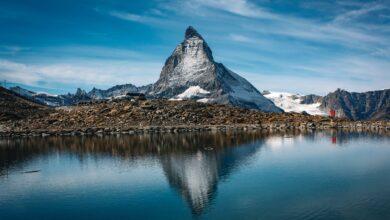
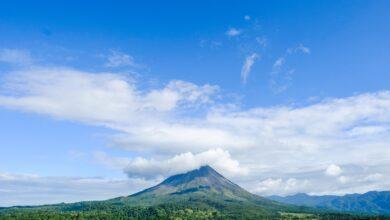
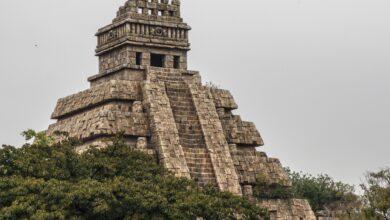
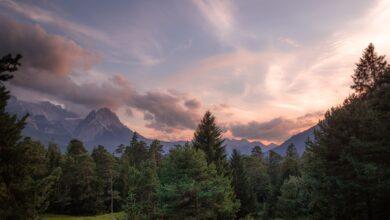

Facebook Comments